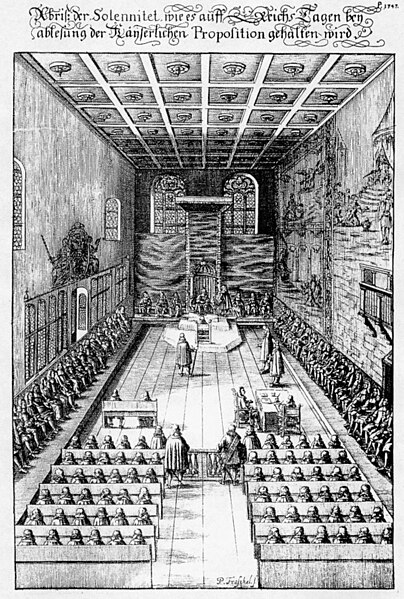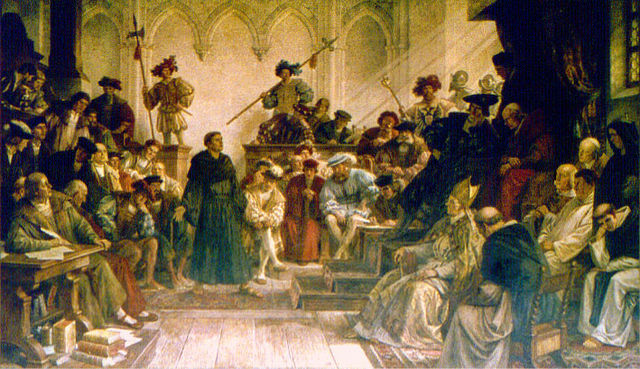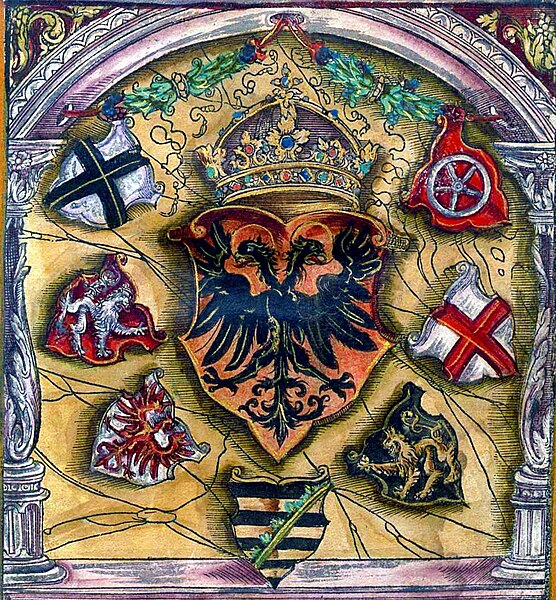Perpetual Diet of Regensburg
The Perpetual Diet of Regensburg or the Eternal Diet of Regensburg, also commonly called in English the Perpetual Diet of Ratisbon, from the city's Latin name, was a session of the Imperial Diet (Reichstag) of the Holy Roman Empire that sat continuously from 1663 to 1806 in Regensburg in present-day Bavaria, Germany.
Previously, the Diet had been convened in different cities but, beginning in 1594, it met only in the town hall in Regensburg. On 20 January 1663, the Diet convened to deal with threats from the Ottoman Empire. Since the Peace of Westphalia in 1648, the Holy Roman Emperor had been formally bound to accept all decisions made by the Diet. Hence, out of fear that the Emperor would disregard the Diet's role by not calling sessions, it never dissolved and became a perpetual diet. Therefore, no final report of its decisions, known as a Recess, could be issued, and that of the preceding diet, issued in 1654, was dubbed the Youngest Recess. From 1663 until the 1684 Truce of Ratisbon, the diet gradually developed into a permanent body.

The Perpetual Diet in Regensburg in 1663 (copper engraving)
The meeting place of the Diet in the Old Town Hall of Regensburg, as pictured in 2016
Imperial Diet (Holy Roman Empire)
The Imperial Diet was the deliberative body of the Holy Roman Empire. It was not a legislative body in the contemporary sense; its members envisioned it more like a central forum where it was more important to negotiate than to decide.
Seating plan for an inauguration of the Imperial Diet in the Regensburg Town Hall from a 1675 engraving: Emperor and prince-electors at the head, secular princes to the left, ecclesiastical to the right, deputies of imperial cities in the foreground.
The summons for Luther to appear at the Diet of Worms, signed by Charles V. The text on the left was on the reverse side.
"Here I stand": Martin Luther at the Diet of Worms, 1521 19th-century painting by Hermann Wislicenus
The coats of arms of prince electors surround the Holy Roman Emperor's, from flags book of Jacob Köbel (1545).






